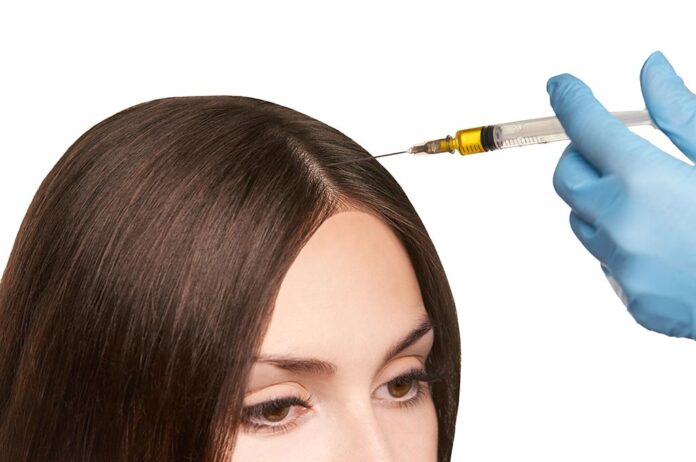If you are distressed by the amount of hair loss that you see in the drain when washing and combing your hair and are also seeing thinning of hair on your scalp, you may be one of many people affected by a condition known as alopecia.
The most common type of hair loss affecting more than 50 million men and 30 million women is a category known as androgenic alopecia (AGA). Recession of hairline often begins in the temples and can affect both men and women. Loss of hair in the crown is also typical for men. In women, this pattern of hair loss often begins with thinning and widening at the part line followed by progressive thinning on the top of the head. As the name implies, androgenic alopecia is caused by the increased production an androgen known as dihydrotestosterone (DHT) on genetically susceptible hair follicles which shortens the growing phase and increases the length of time between shedding and the start of a new growth phase. The hair follicle also changes and so the hair itself is replaced by shorter, thinner, non-pigmented vellus hairs.
Minoxidil, finasteride and hair transplantation are better known therapies for treating AGA. The success with treating with minoxidil (Rogaine) and finasteride (Propecia) tends to plateau after one to two years of continuous use and barely exceeds 30% using either of these agents. Finasteride, used only in men, can also cause undesirable sexual side effects.
There is hope on the horizon which may be more effective than the old standards as research continues to unveil new pathways for treatment including:
Valproic acid and PTD-DBM are new topical preparations which interfere with the androgen induced miniaturization of the hair follicle which is seen in AGA without the side effects of finasteride. Treatment with these agents stimulate hair follicles and allow these hairs to develop into mature terminal hairs. These two agents synergize well with each other and results may be further improved in a program that uses other hair growth peptides such as GHK-Cu and Zinc-Thymulin.
PRP (platelet-rich plasma) derived from the patient’s own blood is full of growth signals which can be injected and/or microneedled with a topical anesthetic into the scalp to stimulate the hair follicle and prolong the anagen (growth phase) of the hair cycle.
Microneedling uses small needles to prick the scalp to stimulate hair regeneration signals within the hair follicle. This can be combined with certain topicals to increase penetration of these agents into the scalp such as PRP and hair growth peptides that are deemed safe for use in this manner. Home care may involve the prescribed use of a dermaroller, though this may be limited by the ouch factor if the hair loss is extensive.
Light-based hair regrowth devices (LLLT) include a number of FDA-cleared helmets using red light have mounting evidence supporting their efficacy in stimulating hair growth when used as part of a comprehensive program.




















